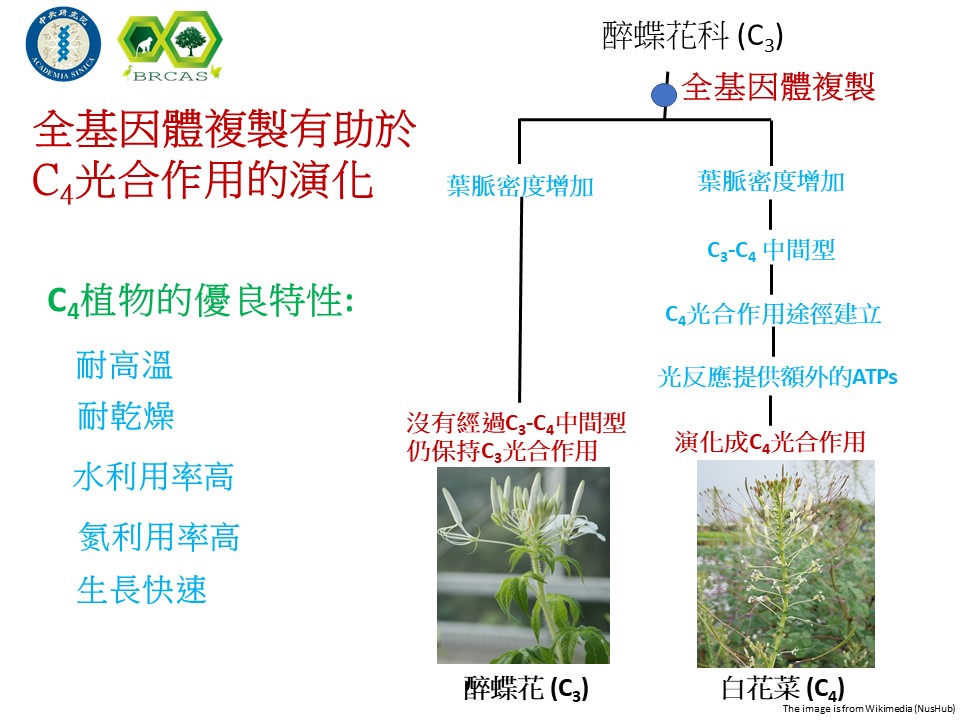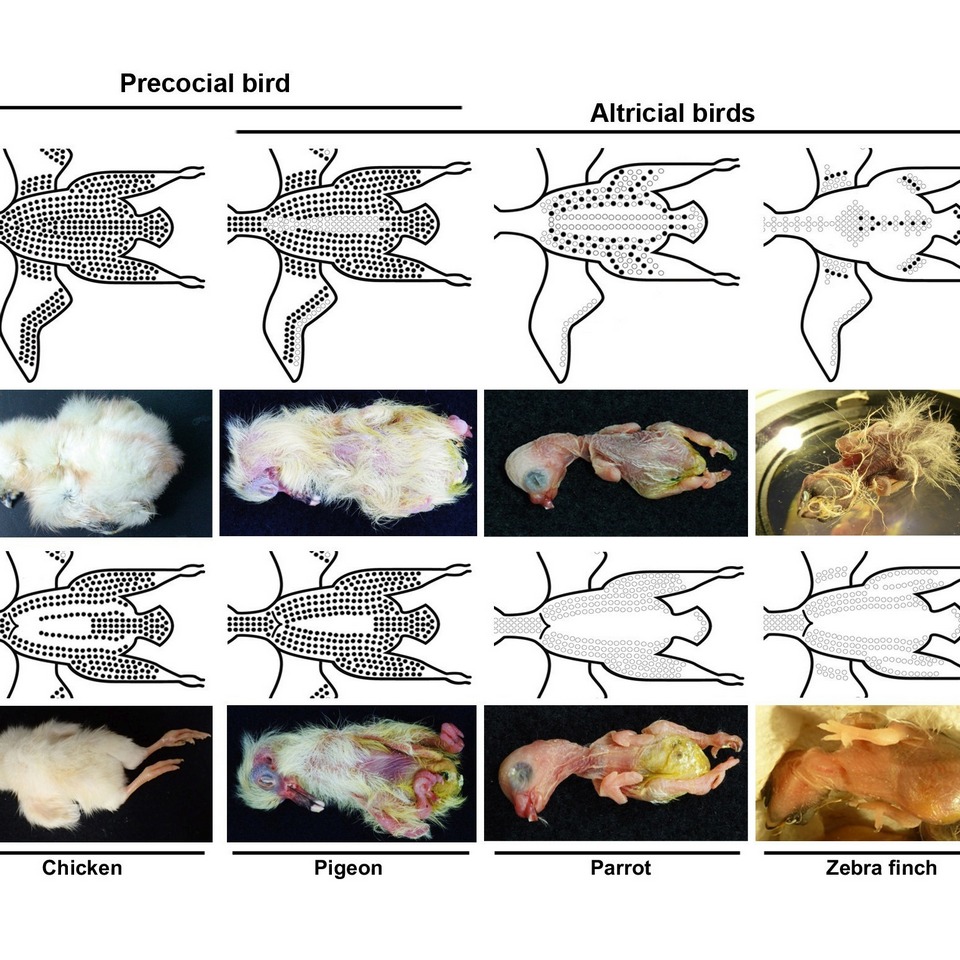
Whole genome duplication facilitates the evolution of C4 photosynthesis from C3 photosynthesis
C4 photosynthesis is more efficient than C3 photosynthesis. Thus, C4 crops (e.g. maize) have higher growth rate and yield than C3 crops (e.g., rice). Dr. Chi-Fa Huang, a postdoc in Biodiversity Research Center, studied the role of whole genome duplication (WGD) in the evolution of C4 photosynthesis. Comparing duplicated genes in the C4 plant Gynandropsis gynandra and the C3 plantTarenaya hassleriana, both of which belong to the family of Cleomaceae and shared a WGD before their divergence, he found that the WGD enabled G. gynandra to undergo a C3-C4 intermediate stage, to develop high vein complexity, to evolve C4 enzyme genes and to produce extra ATPs for the C4 CO2-concentration mechanism. This study provides insights into how C4 photosynthesis evolved from C3 photosynthesis, which may be exploited to improve the productivity of rice and other C3 crops. The study was under the guidance of Prof. Sun-Ban Ku (National Chia-Yi University) and Prof. Wen-Hsiung Li (Academia Sinica) and was published in Molecular Biology and Evolution.
Full article: https://academic.oup.com/mbe/advance-article/doi/10.1093/molbev/msab200/6311670






